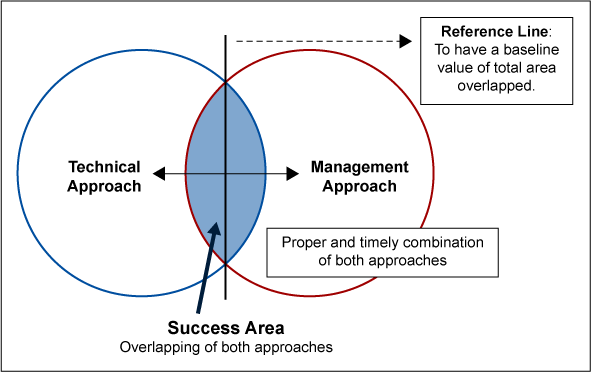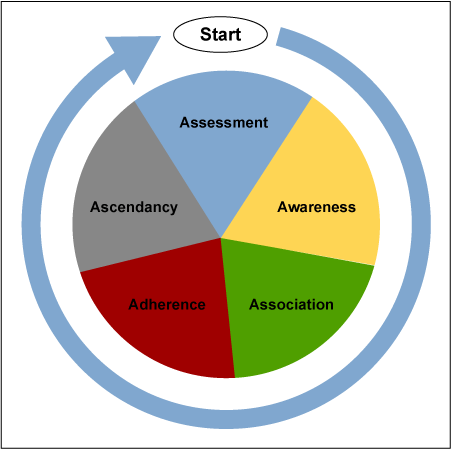
The implementation of the Lean way of dong business is approached in many ways in different types and sizes of organizations. Lean is not just a set of tools and techniques that can be learned from training or certifications session and then implemented in an organization to get the ultimate results. Lean is a culture that has to be developed over a period of time. The organization’s own quality system has to be practiced, standardized and continually improved upon with the stable, verified and validated processes to fulfill the customer requirements. The organization must prioritize value as it is defined by the customer.
Taking the LEAP Forward
A good acronym for the way an organization can implement Lean is LEAP:
- Learn it: Know the requirement of the customer by understanding the customer and their requirements properly.
- Explain it: Convert the customer requirements into technical details.
- Adapt it: Convert the technical details into products through the stable, verified and validated processes of the organization.
- Provide it: Provide error-free products to the customers at the right time, in the right quantity and at the right place.
Starting a Lean implementation in any organization requires the proper combination of two major approaches:
- The technical approach: Learning the set of tools and techniques, and a bewildering array of terms (many Japanese) like kanban, andon, Takt time, level production, jidoka, muda, heijunka and so on.
- The management approach: The process of leading and directing all of an organization through the deployment and manipulation of resources).

An unbalanced approach may lead to an unsuccessful implementation of Lean. While it is the management approach which helps build a Lean culture in an organization, both approaches are necessary. And both require considerable participation by both the organization’s leadership and its quality professionals. Both the approaches must be given due attention.
Move to Lean More Than Five Steps
Although here it has been divided into the five steps, in practice the Lean implementation is a continuous and ongoing process and is not limited by any boundary. The five steps can be termed the 5As – assessment, awareness, association, adherence and ascendancy.

1. Assessment: In the beginning, an organization needs to assess its present condition to know where exactly it stands before starting the culture of Lean. This is where leadership that leads is most vital. It is a frame to know exactly where the organizations wants to be in the future against the present state of condition. To know this, all the employees, starting from top to bottom, should be interviewed and/or assessed with suitable questionnaires. The analysis of this would come out with improvement action points for the organizations, comprised of things like technical and general training needs, process capability needs, management needs, quality management needs, etc.
2. Awareness: After the assessment is done and the analysis is completed, the total organization must be made aware of:
- Where the organization stands now.
- Where the organization is planning to go.
- Why the steps have been initiated.
- Who is the one that is leading the Lean implementation.
- What the timeline is for coming up to a particular standard.
- How the organization is going to lead up to the target.
- What the goals and objectives of the total projects are.
Here the leadership approach is a directive one and the chief executive leads the way in taking initiatives.
3. Association: Association is the step that is aimed at involving all employees in the organization in making the Lean implementation happen and making it a success. Association requires a coaching-type of leadership. Employees are coached on each aspect of the Lean process. The Lean training program is developed and the analysis of things like process capabilities, machine capabilities, human capabilities, worker knowledge, worker skill levels, soft skills like behavior and attitude is thoroughly assessed. This is often outlined as the 4Ms (man, machine, method, material), each of which need to be evaluated in terms of both soft and hard skills/capabilities. Each has impact on total process capability.
4. Adherence: Adherence does not just happen or take place by itself, it is built. Here a participative leadership style is more important. Everybody in the process must understand that they are an important part of the Lean movement. They must have considerable input into the process or they will not commit to the drive for excellence.
5. Ascendancy: Ascendancy toward ownership of the organization’s process improvement culture is the natural progression in the Lean process. It happens as people become empowered to improve the organization, see the suggestions they make paying off in improvement and then realize recognition for their efforts. Here in this stage, ascendancy is developed through the delegative leadership style.
Conclusion: Beginning Never Stops
And the beginning never stops, since Lean implementation is a continuous process. The management approach is aimed at what next to coach. The technical approach is aimed at how provide the appropriate training program. While it might seem the management approach gets more attention, the fact is that they must exist side by side. In the end, a productive in-house technical training program is the backbone of the Lean process. As the organization’s leadership works to explain and manage the process, complementary training programs must be deployed. Both the technical approach and management approach have to be carried forward simultaneously. An imbalance in the combination of the two approaches can lead to a failure in Lean.